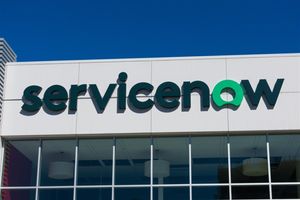The conference showcased Grafana Labs' ongoing commitment to the open source ecosystem and shone a light on innovative community use cases
Grafana Labs, the company behind the world’s most ubiquitous, open and composable operational dashboards, today is making major announcements that underscore its ongoing support for open source development, including the release of Grafana 12 with observability as code functionality and the donation of its eBPF-based auto-instrumentation tool, Beyla, to OpenTelemetry. The company is also unveiling the future of AI in observability with a new agentic LLM built right into Grafana.
These updates were unveiled during Grafana Labs’ GrafanaCON community conference in Seattle. The conference, originally centered solely on the Grafana project, has evolved to include the extended open source observability ecosystem and showcases some of the biggest innovations in open source. This year’s event features a wide variety of talks that showcase the ubiquity and flexibility of Grafana Labs’ open source software – from monitoring apple orchards and helping a droneship circumnavigate the globe to managing data at multi-petabyte scale at Dropbox and playing a pivotal role in Firefly Aerospace’s recent Blue Ghost lunar landing.
Grafana 12: Reimagining Observability as Code
Grafana 12, the latest version of the company's flagship open source data visualization platform, introduces a comprehensive approach to observability as code that enables a more consistent and stable experience.
"We reimagined what it means to provision dashboards and how APIs and schema are structured," said Torkel Ödegaard, Co-Founder, Grafana Labs. "These are fundamental changes that have become the basis for a range of improvements we've made to how users can interact with Grafana through code. With Grafana 12, we focused on providing everything users need to more easily and efficiently create and manage dashboards."
Key features of Grafana 12 include:
- App Platform: The backbone of the observability as code strategy, providing consistent, versioned APIs for managing Grafana resources like dashboards, plus a set of tools for building custom applications on top of Grafana.
- New Dashboard Schema: A new JSON structure that decouples general settings from content, enhancing readability when rendered as code and making it easier to generate dashboards.
- Dynamic Dashboards: Powered by the new dashboard schema, this feature allows for more flexible dashboard creation with improved customization options.
- Git Sync: Users can automatically synchronize Grafana dashboards to a GitHub repository and review changes using pull requests, for higher-quality and more portable dashboards.
- New As Code Tools: A set of new products that can be integrated into pipelines or GitHub Actions, supporting customers who already have observability as code setups in place. These include improvements to the Terraform provider and a new CLI tool, GrafanaCTL.
- 15 New Data Sources: Explore product analytics data, DB data, and developer tools with new data sources like DynamoDB, CosmosDB, Cloudflare, Atlassian Statuspage, and Pagerduty.
- SQL Expressions: Use SQL to combine and transform data from different sources and merge disparate data sets in real time.
Grafana's New Integrated LLM Agent Helps Educate and Investigate
Launching in private preview, Grafana Assistant in Grafana Cloud is a tightly integrated context-aware chat experience. It connects users to their observability data through a flexible interface that lets them ask anything, go places, make changes, and even run investigations in natural language.
Users new to the Grafana ecosystem can learn more about general concepts just by asking, and as they dig into specifics, the agent will drill into actual observability data available via Grafana to provide highly contextual answers to questions. More experienced users can run queries in natural language and even have data analyzed as part of a multi-step investigation.
Grafana Assistant appears as a sidebar within the Grafana interface, receiving context about the current page and providing relevant suggestions. Use cases for Grafana Assistant are limitless, but the team concentrated on a few core areas to start, ensuring it’s easy to interact with the agent through natural language to:
- Ask questions about their observability data.
- Navigate to specific views for metrics, logs, traces, or profiles.
- Make bulk changes to dashboards.
- Create new dashboards through natural language descriptions.
- Perform multi-step investigations by following leads in their data.
"As the world's most ubiquitous visualization platform, Grafana is evolving to incorporate the latest technologies that are transforming our industry. With Grafana Assistant, we're making AI-powered observability a reality, not just as a concept but as a practical tool that helps users more quickly and easily diagnose issues, respond to incidents, build dashboards and alerts, and more – regardless of where their telemetry lives or how it's structured," said Tom Wilkie, CTO, Grafana Labs. “Grafana’s open source roots provide a unique advantage for our AI assistant; the wealth of content on the open web produced by our global community has enabled foundation models to be experts on Grafana, Prometheus, and Loki out-of-the-box. Our LLM-based agent was built to hit the ground running and provide meaningful assistance from day one.”
OpenTelemetry Leadership: Donating Beyla and Celebrating Alloy's First Year
Grafana Labs announced the donation of Grafana Beyla, its open source eBPF-based, zero-code instrumentation tool, to the OpenTelemetry project. Now renamed OpenTelemetry eBPF Instrumentation, this contribution marks a significant step in the company's commitment to the OpenTelemetry ecosystem.
"About six months ago, Grafana Labs started on a journey to donate Beyla to the OpenTelemetry project," said Nikola Grcevski, Principal Software Engineer, Grafana Labs. "We realized that Beyla had one superpower: it was able to instrument and generate telemetry where all other approaches failed. This is when we understood that Beyla needs to become a true community-owned project under the OpenTelemetry umbrella. Beyla will continue to exist as Grafana's distribution of the upstream OpenTelemetry eBPF Instrumentation, but we’re looking forward to driving further innovation around zero-effort instrumentation within the OpenTelemetry community."
GrafanaCON 2025 also marks the one-year anniversary of Grafana Alloy, the company's distribution of the OpenTelemetry Collector with built-in Prometheus pipelines. According to the 2025 Observability Survey from Grafana Labs, OpenTelemetry has continued its trajectory toward mainstream status with half of all organizations increasing their investments in the open source project for the second year in a row. The survey also revealed that 75% of respondents are now using open source licensing for observability, with 71% reporting that their organizations use both Prometheus and OpenTelemetry in some capacity, underscoring the importance of Alloy to make Prometheus and OpenTelemetry more interoperable.
Grafana Drilldown: Bringing Queryless Exploration to Traces
The 2025 Observability Survey found that complexity is the top challenge to tackle in observability. To help meet this need for users, Grafana Labs has developed Grafana Drilldown, a suite of tools that streamlines data exploration and analysis by helping users to drill down and reduce the volume of data they’re sifting through by simply pointing and clicking instead of having to know query languages like PromQL or LogQL. Following the general availability of Drilldown for Metrics, Logs, and Profiles, the company is announcing Traces Drilldown is now also generally available.
“Traces Drilldown has been a great tool when we’re unsure what’s going wrong in a service,” said Glovo engineers Deepika Muthudeenathayalan and Alex Simion. “We like how quickly we can filter through traces and start finding clues. Being able to isolate specific span types (like root spans) makes it much easier to focus, deep dive into issues, and understand if it's a local or global problem of the service.”
Grafana k6 1.0: A Milestone for Performance and Reliability Testing
After nearly a decade of development, Grafana Labs announced the general availability of Grafana k6 1.0, a major milestone for the popular open source performance testing tool that was acquired by Grafana Labs in 2021.
"This release isn't just about version numbers or the latest features. It's about trust," said Théo Crevon, Staff Software Engineer at Grafana Labs. "With k6 1.0, we're doubling down on our promise to make reliability testing predictable, scalable, and developer-friendly – whether you're simulating 10 users or 100,000."
Key features of Grafana k6 1.0 include:
- Native TypeScript Support: Write more robust, predictable, and easier-to-maintain tests with type safety and IDE autocomplete.
- Native Extensions Support: Seamlessly import and use k6 extensions in both open source and Grafana Cloud k6 tests without external tooling.
- Revamped Test Insights: Modernized end-of-test summary with scenario-specific metrics, hierarchical grouping, and improved checks results.
- Production-Grade Stability: Clear support and versioning guarantees following Semantic Versioning principles.
To further empower the next decade of reliability testing, Grafana Labs also recently announced the general availability of k6 Studio, an open source desktop application that makes it easier to generate k6 test scripts.
Resources:
- Read the Grafana 12 release blog
- Learn more about Grafana Assistant
- Check out Grafana Labs’ 2025 Observability Survey
About Grafana Labs
Grafana Labs provides an open and composable monitoring and observability stack built around Grafana, the leading open source technology for dashboards and visualization. There are 5,000+ Grafana Labs customers, including Bloomberg, Citigroup, Dell Technologies, Salesforce, and TomTom, and 25M+ Grafana users around the world. Grafana Labs helps companies achieve their observability goals with the LGTM Stack, which features scalable metrics (Grafana Mimir), logs (Grafana Loki), and traces (Grafana Tempo) as well as extensive enterprise data source plugins, dashboard management, alerting, reporting, and security. The fully managed Grafana Cloud offering is designed to help organizations get observability up and running easier and faster, with turnkey solutions for Kubernetes and infrastructure monitoring, incident response management, load testing, application observability, and more. Grafana Labs is backed by leading investors Lightspeed Venture Partners, Lead Edge Capital, GIC, Sequoia Capital, Coatue, J.P. Morgan, and CapitalG. Follow Grafana Labs on LinkedIn and Twitter or visit grafana.com.
View source version on businesswire.com: https://www.businesswire.com/news/home/20250507135781/en/
Contacts
Press Contact:
Alexa Becker
alexa.becker@grafana.com





